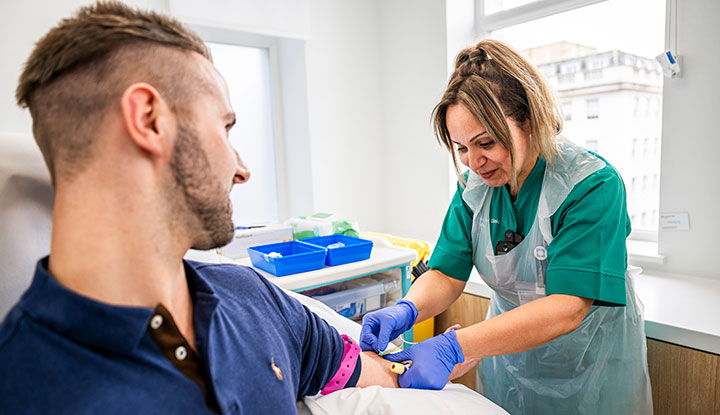A phlebotomist is a medical professional who’s trained to perform blood draws. They collect a sample of your blood for testing, research or donation.
Advertisement
Cleveland Clinic is a non-profit academic medical center. Advertising on our site helps support our mission. We do not endorse non-Cleveland Clinic products or services. Policy

A phlebotomist is a medical professional who is trained to collect blood samples. Phlebotomists collect and prepare your blood for testing so it can be analyzed in a laboratory.
Advertisement
Cleveland Clinic is a non-profit academic medical center. Advertising on our site helps support our mission. We do not endorse non-Cleveland Clinic products or services. Policy
Phlebotomists are trained to collect blood samples from:
A phlebotomist’s main job is to collect blood samples. More specifically, phlebotomists:
If you’re having your blood drawn through your vein, you can expect the following:
Advertisement
Phlebotomists work in a variety of healthcare settings where blood is collected. They typically collect blood samples that are sent to testing laboratories to help diagnose or treat conditions. Phlebotomists may travel to homes or workplaces, public health agencies or blood donation centers. Some of the places you can find them are:
The requirements vary from state to state. In most cases, you need certification from a completed phlebotomy program. Phlebotomy programs are typically offered at technical and vocational schools and community colleges. They often take less than a year to complete.
Specific steps to becoming a phlebotomist include:
The exam usually consists of a written and a practical section. You’ll be required to show your ability to draw blood, label samples, sanitize equipment and more.
There are three levels of certification that a phlebotomy program can offer, including:
Needing to get bloodwork done can be scary or stressful for many people. Know that the phlebotomist drawing your blood has specialized training and skills to make sure the process is as safe and comfortable as possible. Don’t be afraid to ask your phlebotomist questions. They’re available to help you feel more comfortable and confident about your blood draw.
Advertisement
Cleveland Clinic’s primary care providers offer lifelong medical care. From sinus infections and high blood pressure to preventive screening, we’re here for you.

Last reviewed on 12/12/2025.
Learn more about the Health Library and our editorial process.